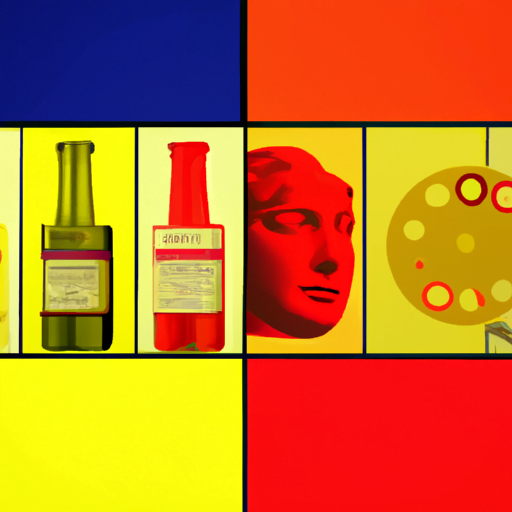
-
Table of Contents
- The Art of Visual Harmony: Balancing Elements in Design
- Understanding Visual Harmony
- The Principles of Visual Harmony
- 1. Balance
- 2. Proportion
- 3. Contrast
- 4. Repetition
- 5. Harmony
- Applying Visual Harmony in Design
- 1. Graphic Design
- 2. Interior Design
- 3. Fashion Design
- 4. Architecture
- Case Studies: Examples of Visual Harmony
- 1. Apple
- 2. The Sistine Chapel
- 3. The Barcelona Pavilion
- Conclusion
The Art of Visual Harmony: Balancing Elements in Design

Design is a powerful tool that can evoke emotions, convey messages, and create memorable experiences. Whether it’s a website, a logo, or a poster, the success of a design often hinges on the careful balance of its elements. Visual harmony, the art of achieving a pleasing and balanced composition, plays a crucial role in creating effective designs. In this article, we will explore the principles of visual harmony and how they can be applied to various design disciplines.
Understanding Visual Harmony
Visual harmony refers to the arrangement of elements in a design that creates a sense of balance, unity, and coherence. It involves the careful consideration of factors such as color, shape, size, texture, and space. When these elements are harmoniously combined, they create a visually appealing and engaging composition.
Visual harmony is not limited to any specific design style or medium. It can be observed in various art forms, including graphic design, interior design, fashion design, and even architecture. By understanding the principles of visual harmony, designers can create more impactful and memorable designs.
The Principles of Visual Harmony
There are several principles that guide the creation of visual harmony. These principles provide a framework for designers to balance and arrange the elements in their compositions. Let’s explore some of the key principles:
1. Balance
Balance is one of the fundamental principles of visual harmony. It refers to the distribution of visual weight in a design. There are three types of balance:
- Symmetrical Balance: In symmetrical balance, elements are evenly distributed on either side of a central axis. This creates a sense of stability and formality. For example, a logo with identical elements on both sides of a vertical axis.
- Asymmetrical Balance: Asymmetrical balance involves the distribution of visual weight without mirroring the elements. It creates a more dynamic and informal composition. For example, a poster with a large image on one side and smaller text on the other.
- Radial Balance: Radial balance occurs when elements radiate from a central point. It creates a sense of movement and energy. For example, a circular logo with elements extending outward.
2. Proportion
Proportion refers to the size relationship between different elements in a design. It helps establish a sense of hierarchy and visual balance. By using proportion effectively, designers can guide the viewer’s attention and create a harmonious composition. For example, a website with a large hero image and smaller supporting elements.
3. Contrast
Contrast is the juxtaposition of different elements to create visual interest and emphasis. It can be achieved through variations in color, size, shape, texture, or typography. Contrast helps highlight important elements and adds depth to a design. For example, using a bold color against a neutral background or pairing a serif font with a sans-serif font.
4. Repetition
Repetition involves the use of recurring elements or patterns in a design. It creates a sense of unity and consistency. Repetition can be applied to colors, shapes, lines, or even typography. By repeating certain elements, designers can establish a visual rhythm and reinforce the overall composition. For example, using the same color for headings throughout a website.
5. Harmony
Harmony is the overall sense of unity and coherence in a design. It is achieved when all the elements work together to create a visually pleasing composition. Harmony can be achieved through the careful application of the other principles of visual harmony. It ensures that the design feels cohesive and well-integrated.
Applying Visual Harmony in Design
Now that we have explored the principles of visual harmony, let’s see how they can be applied in different design disciplines:
1. Graphic Design
In graphic design, visual harmony is crucial for creating effective communication. Whether it’s a poster, a brochure, or a website, the principles of visual harmony can help designers convey their message clearly and engage the audience. For example, a well-balanced composition with appropriate contrast and proportion can make a poster stand out and grab attention.
2. Interior Design
In interior design, visual harmony plays a vital role in creating a comfortable and aesthetically pleasing space. By balancing elements such as furniture, colors, textures, and lighting, interior designers can create harmonious environments that evoke specific moods or emotions. For example, a living room with a balanced arrangement of furniture and complementary color schemes.
3. Fashion Design
In fashion design, visual harmony is essential for creating visually appealing and cohesive outfits. By considering factors such as color, pattern, texture, and silhouette, fashion designers can create harmonious looks that flatter the wearer. For example, a well-balanced outfit with complementary colors and textures.
4. Architecture
In architecture, visual harmony is crucial for creating buildings and spaces that are visually pleasing and functional. By balancing elements such as form, scale, materials, and proportions, architects can create harmonious structures that integrate seamlessly with their surroundings. For example, a building with a balanced facade and well-proportioned windows.
Case Studies: Examples of Visual Harmony
Let’s take a look at some real-world examples where visual harmony has been effectively applied:
1. Apple
Apple is known for its minimalist and visually harmonious designs. From their products to their packaging, Apple consistently applies the principles of visual harmony. Their use of clean lines, balanced proportions, and subtle contrasts creates a sense of elegance and sophistication.
2. The Sistine Chapel
The Sistine Chapel ceiling, painted by Michelangelo, is a masterpiece of visual harmony. The composition is carefully balanced, with the central figures surrounded by smaller figures and architectural elements. The use of color, proportion, and repetition creates a harmonious and awe-inspiring experience.
3. The Barcelona Pavilion
The Barcelona Pavilion, designed by Ludwig Mies van der Rohe, is a prime example of visual harmony in architecture. The building’s clean lines, balanced proportions, and use of materials create a harmonious and serene space. The careful arrangement of elements guides the visitor’s movement and creates a sense of tranquility.
Conclusion
Visual harmony is a powerful tool that can elevate the impact of any design. By understanding and applying the principles of visual harmony, designers can create compositions that are visually appealing, engaging, and memorable. Whether it’s graphic design, interior design, fashion design, or architecture, visual harmony plays a crucial role in creating successful designs. So, the next time you embark on a design project, remember to balance the elements and create a
